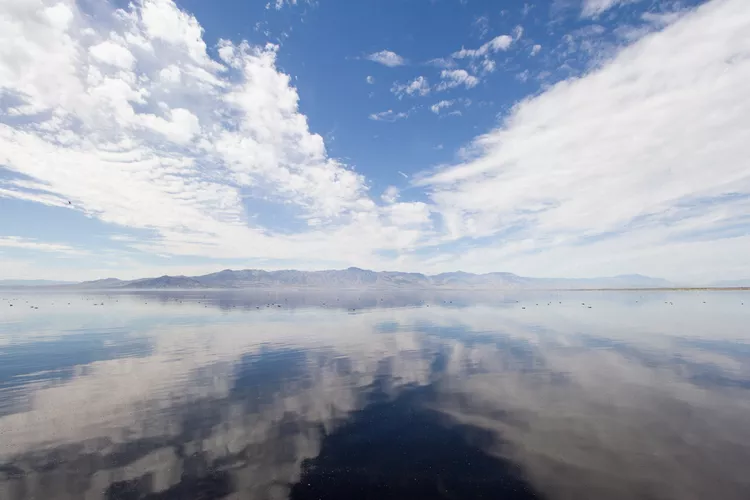Summary
The Salton Sea: A Unique Desert Destination
It covers almost 350 square miles of the California desert at an elevation that’s only a few feet higher than Death Valley’s famed Badwater. Its water is twice as salty as the Pacific Ocean, creating a surreal atmosphere. You might think it’s a mirage when you first see it from a distance due to the shimmering heat waves rising from the desert floor. However, it is disappearing rapidly. Here’s your guide to experiencing the Salton Sea before it changes forever.
Things to Do at the Salton Sea
The Salton Sea is a fascinating place with an otherworldly look about it. During certain parts of the year, it’s a fantastic location for birdwatching. Additionally, it serves as a popular site for camping, boating, and fishing.
However, it’s important to note that algae blooms occur in early spring and summer. When these algae die, the decaying vegetation emits a foul odor, which should not be underestimated, although it only lasts part of the year.
Fourteen miles of the northeastern shore is designated as a state park, offering several beaches and campgrounds. Some of the activities you can enjoy there include:
- Boating: Due to the high salt content, boats float better than in freshwater, and engines operate more efficiently at this low elevation. This has given the Salton Sea a reputation as one of the fastest lakes in the U.S. While several marinas are available, as sea levels drop, accessing the water may become more challenging.
- Fishing: The increasing saltiness of the Salton Sea basin limits the types of fish present, predominantly Tilapia, for which there are no legal limits. The optimal fishing period runs from June through September, and a valid fishing license is required.
- Bird Watching: The Salton Sea lies on the Pacific Flyway, attracting 400 species of migratory birds, nearly half of those known in North America, passing through from October to January.
- Photography: The extraordinary landscapes, abandoned buildings, and flocks of migrating birds make this area a dream destination for photographers year-round.
Salton Sea Lodging
Salton Sea State Recreation Area has campgrounds along its shores, though many are gradually closing due to the shrinking sea. For the latest conditions, check the Salton Sea Recreation Area website.
In addition to the state park, several privately-owned campgrounds and resorts are nearby, including Fountain of Youth, Bashford’s, and Glamis North Hot Springs Resort, which offers cabin accommodations as well.
The town of Brawley, located southeast of the sea, provides the best selection of hotels and indoor lodging options.
The Story of the Salton Sea
The Salton Sea is one of the world’s largest inland seas, once spanning 45 miles long and 25 miles wide. At 227 feet below sea level, it is also one of the lowest spots on the planet. The story of the Salton Sea began in 1905 when spring floods escaped irrigation canals, gushing into an ancient lake bed, resulting in the formation of this unique body of water.
Today, this lake is shrinking rapidly. Only a small amount of fresh water enters, while water leaves only through evaporation or when sold to local water authorities. As the sea dries up, minerals become more concentrated, making it 30 percent saltier than the ocean. Consequently, areas that once lay beneath the water are exposed to the sun and wind, contributing to the dust problem.
Addressing the drying up of the Salton Sea poses significant challenges, and its managers are exploring various options. You can find a detailed summary of the issues at USA Today, and the Desert Sun newspaper provides an insightful overview of plans for the sea as of 2017 here.
What You Need to Know About Visiting the Salton Sea
The Salton Sea is situated 30 miles south of Indio on California Highway 111, approximately a 3-hour drive from Los Angeles or San Diego. Your travel route may vary depending on which side of the sea you plan to visit.
Winter typically offers the coolest weather and an opportunity to observe migrating birds. In contrast, summer temperatures often exceed 100°F.
For the latest updates on conditions and accessibility, individuals planning a visit should check the Salton Sea State Recreation Area website.





